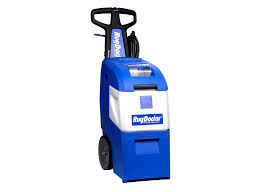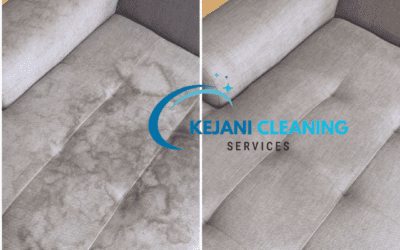As much as we love spending time on our sofas, they are bound to get stained at some point in time. From accidental spills to dirt and sweat, sofa stains can be caused by a variety of factors. In this article, we will delve into the science behind sofa stains and understand the different types of stains that can occur. Additionally, we will provide you with practical tips on how to treat them effectively.
Table of Contents
- Introduction
- Understanding the Science Behind Sofa Stains
- What Makes Sofas Susceptible to Stains?
- The Chemical Composition of Stains
- The Role of pH in Stain Removal
- The Importance of Quick Action
- Different Types of Sofa Stains
- Food and Beverage Stains
- Grease and Oil Stains
- Ink and Marker Stains
- Blood and Urine Stains
- Pet Stains
- How to Treat Sofa Stains Effectively
- Pre-treatment
- Cleaning Solutions
- Drying and Finishing
- Conclusion
- FAQs
Introduction
Sofas are an integral part of our homes, providing us with comfort and relaxation after a long day. However, they are also susceptible to stains and spills, which can ruin the overall look and feel of the sofa. Treating sofa stains can be a daunting task, especially if you are unsure about the type of stain and the appropriate treatment. In this article, we will explore the science behind sofa stains and provide you with practical tips on how to treat them effectively.
Understanding Different Types of Stains and How to Treat Them
Before we delve into the different types of sofa stains, it is essential to understand the science behind them. Stains are caused by a combination of factors, including the chemical composition of the substance that caused the stain, the type of fabric on the sofa, and the time it takes to treat the stain.
What Makes Sofas Susceptible to Stains?
Sofas are made up of a variety of materials, including fabrics, leather, and synthetic materials. Each of these materials has different properties that make them more or less susceptible to stains. Fabrics, for example, are more prone to stains because they have a higher absorption rate than other materials. Leather, on the other hand, is more resistant to stains but can still be affected by certain substances.
The Chemical Composition of Stains
The chemical composition of the substance that caused the stain plays a crucial role in how it can be treated. Different substances require different types of cleaning solutions to remove them effectively. For example, water-based stains, such as coffee or soda, can be removed with a simple cleaning solution. Oil-based stains, such as grease or ink, require a more aggressive cleaning solution to break down the oils and remove the stain.
The Role of pH in Stain Removal
The pH level of the cleaning solution is another essential factor in sofa stain removal. Each stain has a different pH level, and the cleaning solution must have a pH level that is either neutral or opposite to the stain’s pH level. For example, acid-based stains require a basic cleaning solution, while alkaline-based stains require an acidic cleaning solution.
The Importance of Quick Action
The longer you wait to treat a stain, the harder it becomes to remove it. This is because the stain seeps deeper into the fabric, making it more difficult to break down and remove. Therefore, it is essential to act quickly when you notice a stain on your sofa.
Different Types of Sofa Stains
Now that we have a basic understanding of the science behind sofa stains, let’s look at the different types of stains that can occur.
Food and Beverage Stains
Food and beverage stains are some of the most common types of stains found on sofas. They can be caused by spilled coffee, wine, chocolate, and other food items. These stains are typically water-based and can be removed using a simple cleaning solution of warm water and dish soap.
Grease and Oil Stains
Grease and oil stains are caused by substances such as butter, cooking oil, or salad dressing. These stains are oil-based and require a more aggressive cleaning solution to break down the oils and remove the stain. A solution of warm water and vinegar or baking soda can be effective in removing grease and oil stains.
Ink and Marker Stains
Ink and marker stains are notoriously difficult to remove from sofas. They are caused by substances such as pens, markers, or printer ink. Ink and marker stains are usually alcohol-based and require a specialized cleaning solution that contains rubbing alcohol or isopropyl alcohol to remove them effectively.
Blood and Urine Stains
Blood and urine stains are common if you have pets or young children at home. These stains are protein-based and require an enzyme-based cleaning solution to break down the proteins and remove the stain. Hydrogen peroxide or baking soda mixed with water can be an effective solution for removing blood and urine stains.
Pet Stains
Pet stains are caused by a variety of substances, including urine, feces, and vomit. These stains are usually protein-based and require an enzyme-based cleaning solution to break down the proteins and remove the stain. A solution of warm water and vinegar or baking soda can be effective in removing pet stains.
How to Treat Sofa Stains Effectively
Now that we have a basic understanding of the different types of sofa stains, let’s look at how to treat them effectively.
Pre-treatment
The first step in treating a sofa stain is to pre-treat the affected area. This involves removing any excess liquid or solid matter from the sofa. You can use a dry cloth or paper towel to blot the area and absorb as much of the substance as possible.
Cleaning Solutions
The next step is to apply a cleaning solution to the affected area. The type of cleaning solution you use will depend on the type of stain you are treating. For water-based stains, a simple solution of warm water and dish soap can be effective. For oil-based stains, a solution of warm water and vinegar or baking soda can be effective. For ink and marker stains, a specialized cleaning solution that contains rubbing alcohol or isopropyl alcohol is required.
Drying and Finishing
After applying the cleaning solution, it is essential to dry the affected area thoroughly. You can use a fan or hairdryer on the cool setting to speed up the drying process. Once the area is dry, you can finish by applying a protective coating to the sofa to prevent future stains.
Conclusion
Sofa stains are an inevitable part of life, but with the right knowledge and tools, they can be treated effectively. Understanding the science behind sofa stains and the different types of stains that can occur is essential in treating them effectively. By following the tips outlined in this article, you can keep your sofa looking clean and fresh for years to come.
FAQs
- How can I prevent sofa stains from occurring?
To prevent sofa stains from occurring, you can use furniture covers or throws, especially if you have young children or pets at home. It is also a good idea to avoid eating or drinking on the sofa and to clean up spills immediately to prevent them from becoming stains.
- Can I use bleach to remove sofa stains?
Bleach is not recommended for removing sofa stains, as it can damage the fabric and cause discoloration. It is best to use a cleaning solution specifically designed for the type of stain you are trying to remove.
- What should I do if the stain is still visible after treatment?
If the stain is still visible after treatment, you may need to repeat the cleaning process or try a different cleaning solution. It is important not to scrub or rub the stain, as this can damage the fabric and make the stain worse.
- How often should I clean my sofa?
The frequency of sofa cleaning depends on how often the sofa is used and whether or not it is exposed to spills and stains. As a general rule, it is a good idea to clean your sofa at least once every six months to keep it looking clean and fresh.
- Are there any natural cleaning solutions that can be used to remove sofa stains?
Yes, there are several natural cleaning solutions that can be used to remove sofa stains. Baking soda, vinegar, and hydrogen peroxide are all effective natural cleaning agents that can be used to treat different types of stains. However, it is important to test these solutions on a small, inconspicuous area of the sofa before using them on a larger stain.
Related Posts
Best Way to Clean a White Leather Sofa: Ultimate Guide to Cleaning White Furniture
Best Way to Wash Couch Cushions: A Comprehensive Guide to Deep Cleaning
How to Deal with Mould in Fabric Sofa: Comprehensive Guide
The Best Way to Clean a Fabric Couch: A Comprehensive Guide
Velvet Sofa Cleaning Tips: Expert Advice for a Luxurious and Pristine Velvet Couch
Removing Pet Stains from Sofa: A Comprehensive Guide
Upholstered Furniture Spot Cleaning: A Comprehensive Guide to Keeping Your Furniture Fresh and Clean
The Hidden Dangers of a Dirty Sofa: Why You Need to Clean Your Sofa Regularly
Leather Sofa Cleaning: Tips and Tricks for Keeping Your Leather Furniture Looking New
Top 5 Benefits of Professional Sofa Cleaning Service





0 Comments